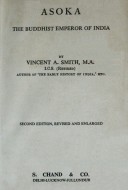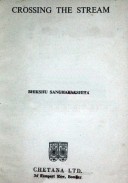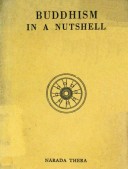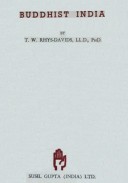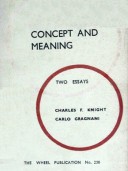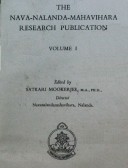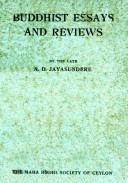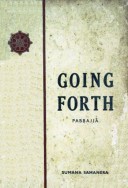Tìm Sách
Sách tiếng Anh-English >> Asoka – The Buddhist Emperor of India
Thông tin tra cứu
- Tên sách : Asoka – The Buddhist Emperor of India
- Tác giả : Vincent A. Smith
- Dịch giả :
- Ngôn ngữ : Anh
- Số trang : 243
- Nhà xuất bản : S. Chad & Co. Delhi
- Năm xuất bản : 1957
- Phân loại : Sách tiếng Anh-English
- MCB : 1210000002562
- OPAC :
- Tóm tắt :
PREFACE TO SECOND EDITION
Although the plan of the book is maintained unchanged, and Chapters VI and VII, containing the legends, have been reprinted without material emendation, this edition is substantially a new work.
The versions of the inscriptions, its most important part, have been repeatedly compared word by word with the texts and revised throughout, after careful consideration of all criticisms accessible to me. In this task I have been aided greatly by many valuable communications received from Mr. F. W. Thomas, Librarian of the India Office. It is a pleasure to me to be now able to agree with M. Senart in the view expressed by him in 1886, and adopted by Mr. Thomas, that Minor Rock Edict I is the earliest document in the collection, and that the mysterious figures at the end of it are not a date. Unfortunately, agreement with those two eminent scholars involves disagreement with others. The recent discovery of the Sarnath pillar not only adds a new edict to those previously known, but also clears up the’ interpretation of the Sanchi and Kausambi edicts, which were misunderstood when the first edition of this book was published. A bibliographical note and map have been inserted.
The difference of opinion alluded to concerning the interpretation of Minor Rock Edict I governs the treatment of the whole history of Asoka, which is discussed in this volume on the basis that he became a Buddhist early in his reign, and that all the edicts were issued by him as the sovereign Head of the Buddhist Church.
The description of the Maurya empire and administration in Chapter II has been revised with special regard to the discovery and partial publication by Mr. R. Shamasastry of the ancient treatise on the Art of Government, ascribed to Chanakya or Kautilya, the minister of Chandragupta Maurya.
The account of the monuments in Chapter III has been corrected in various details, brought up to date, and amplified.
The time for declaring the interpretation of every phrase in the inscriptions of Asoka to be definitely settled has not yet come; but this little volume, while not professing to solve all doubts, aims at placing before its readers the results of the latest researches so far as they are known to and understood by the author, and certainly marks a great advance in the correct interpretation of the documents, as compared with its predecessor. Perhaps it may be permissible to add that it is still the only work in any language, in which all the inscriptions can be found together, except that Dr. Coomaraswamy has issued from the Essex House Press a limited edition de luxe of my versions, nearly identical with those now offered.
Feb. 12, 1909. V. A. S.
EXTRACT FROM PREFACE TO FIRST EDITION
A Volume on Asoka Maurya by professor Rhys Davids was intended to be the first of the ‘Rulers of India’ series, but unfortunately circumstances prevented the fulfilment of that intention, and the series was closed leaving vacant the niche destined for the great Buddhist emperor. With the approval of Professor Rhys Davids I have undertaken the preparation of a supplementary volume giving in a popular form the substance of what is known concerning the Maurya empire. The sources of our knowledge of ancient Indian history are so meagre that it is impossible to treat the subject of this volume in a manner similar to that in which the biographies of Akbar, Albuquerque, and other Indian worthies have been treated. All minute biographical details are lacking, and a distinct picture of the man Asoka cannot be painted. Nevertheless, enough is known to render the subject interesting, and if my book should fail to interest readers, the fault will lie with the author rather than with the subject.
The chapter entitled ‘The History of Asoka’ will be found to differ widely from all other publications, Buch as Cunningham’s Bhilsa Topes, which treat of that topic. I have tried to follow the example of the best modern historians, and to keep the legends separate from what seems to me to be authentic history. Among the legends I have placed the stories of the conversion of Ceylon and of the deliberations of the so-called Third Council. All the forms of those stories which have reached US are crowded with absurdities and contradictions from which legitimate criticism cannot extract trustworthy history.
In dealing with the vexed question of transliteration I have shunned the pedantic atrocities of international systems, which do not shrink from presenting Krishna in the guise of Krishna, Champa as Kampa, and so on. The consonants in the Indian words and names in this book are to be pronounced as in English, and the vowels usually as in Italian. The short unaccented a has an indistinct sound as in the words ‘woman’. Long vowels are marked when necessary; other diacritical marks have not been used in the text.
CONTENTS
I. The History of Asoka
Chronology of the Maurya Period
II. Extent and Administration of the Empire
III. The Monuments
Inscribed Pillars of Asoka
IV. The Rock Edicts
V. The Pillar and Miscellaneous Inscriptions
Bibliographical Note
VI. The Ceylonese Legend of Asoka
VII. The Indian Legends of Asoka
Appendix
Index
 Facebook
Facebook
 Google
Google
 Google+
Google+
